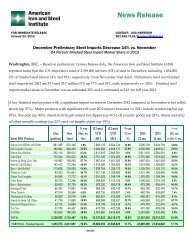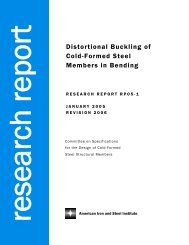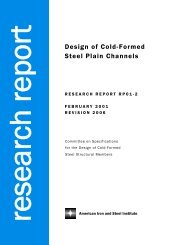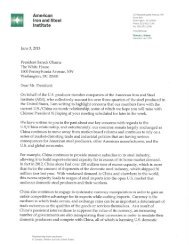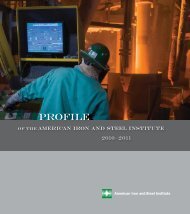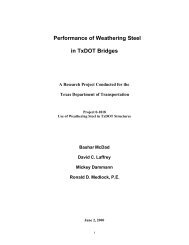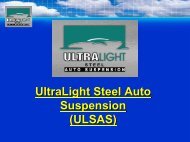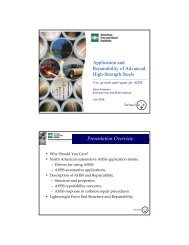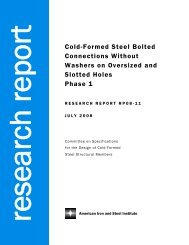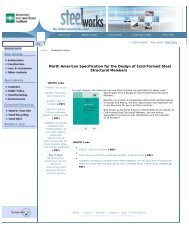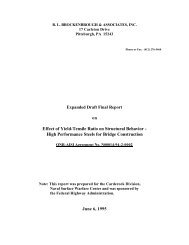Environmental Life Cycle Assessment of Southern Yellow Pine ...
Environmental Life Cycle Assessment of Southern Yellow Pine ...
Environmental Life Cycle Assessment of Southern Yellow Pine ...
You also want an ePaper? Increase the reach of your titles
YUMPU automatically turns print PDFs into web optimized ePapers that Google loves.
EXECUTIVE SUMMARY<br />
workers will frequently have clothes that become contaminated with herbicides and adjuvants. While <br />
no inventory or characterization data were available to quantify this impact, it is considered to <br />
present a risk <strong>of</strong> human exposures to toxic chemicals in the BAU scenario. <br />
1.5.4 Lower Generation <strong>of</strong> Untreated Hazardous Waste <br />
The Toxicity Characteristic Leaching Procedure (TCLP) is used to classify wastes as hazardous under <br />
Resource Conservation and Recovery Act (RCRA). The TCLP test method determines the mobility <strong>of</strong> <br />
chemicals as a way <strong>of</strong> measuring how the material may behave in the environment. Wood treated <br />
with CCA fails the TCLP for arsenic and meets the definition <strong>of</strong> a hazardous waste; however, the US <br />
EPA has provided an exemption for CCA wood used for utility poles. 49<br />
At end-‐<strong>of</strong>-‐life, CCA treated poles are removed and are typically landfilled, but may be also illegally <br />
reused (see Figure 7) or incinerated. Only legal disposal <strong>of</strong> used CCA treated poles in a landfill is <br />
considered in this study. <br />
Failure to meet TCLP for arsenic suggests that if disposed in a landfill, the wood will leach mobile <br />
arsenic. This presents a risk to human health and the environment if wood poles are disposed <strong>of</strong> in <br />
municipal landfills. In many cases, wood poles will be illegally disposed <strong>of</strong>, or used in commercial or <br />
even residential settings; such inappropriate disposal methods present a risk to humans, flora, and <br />
fauna, through leaching <strong>of</strong> chemicals into soils and water (see Figure 7). <br />
Figure 7. Examples <strong>of</strong> illegal re-‐use <strong>of</strong> treated utility poles, for fence construction in the Southeastern US. <br />
The greenish hue <strong>of</strong> these poles indicates that CCA was the treatment chemical used. In these situations, <br />
the poles represent a risk to contamination <strong>of</strong> local soils from the leaching <strong>of</strong> arsenic and chromium. <br />
Steel pole production results in negligible untreated hazardous waste. The only untreated hazardous <br />
waste in the SPR scenario comes from the retired wood utility poles. In terms <strong>of</strong> the secondary <br />
consequences <strong>of</strong> replacing wood poles with steel poles, a significant reduction in the production <strong>of</strong> <br />
CCA-‐treated wood and associated hazardous waste from disposal would be anticipated. This is a <br />
major benefit <strong>of</strong> the SPR scenario. <br />
49 Chromated Copper Arsenate (CCA) Compliance Strategy. US EPA. June 22, 2004. <br />
http://www.epa.gov/oppad001/reregistration/cca/cca_strategy5.pdf <br />
April 2013 | ©SCS Global Services <br />
ES-‐ 20



